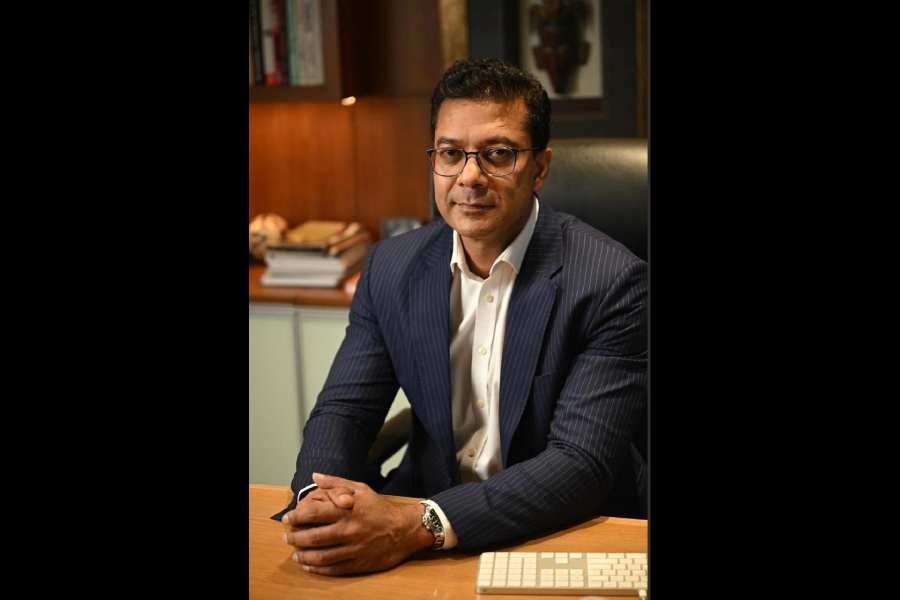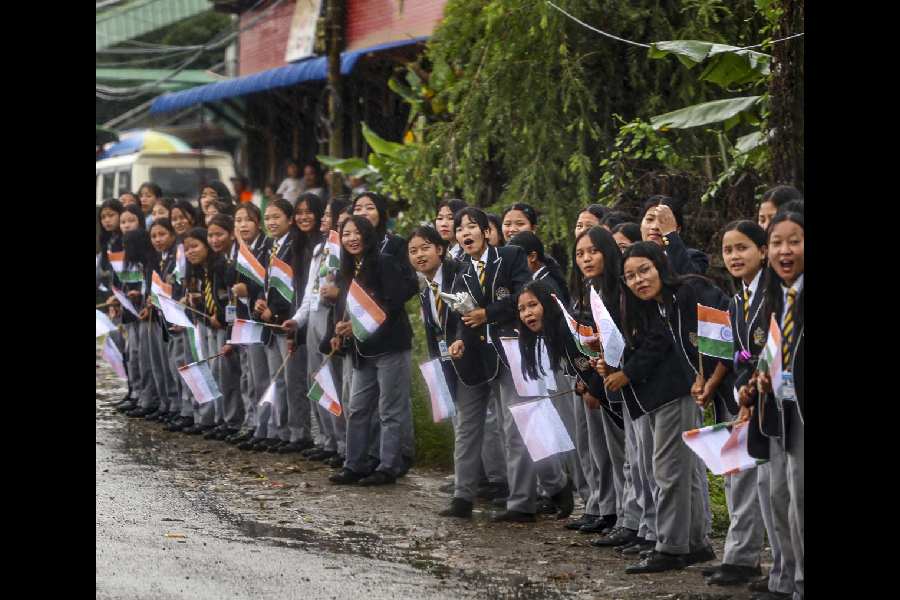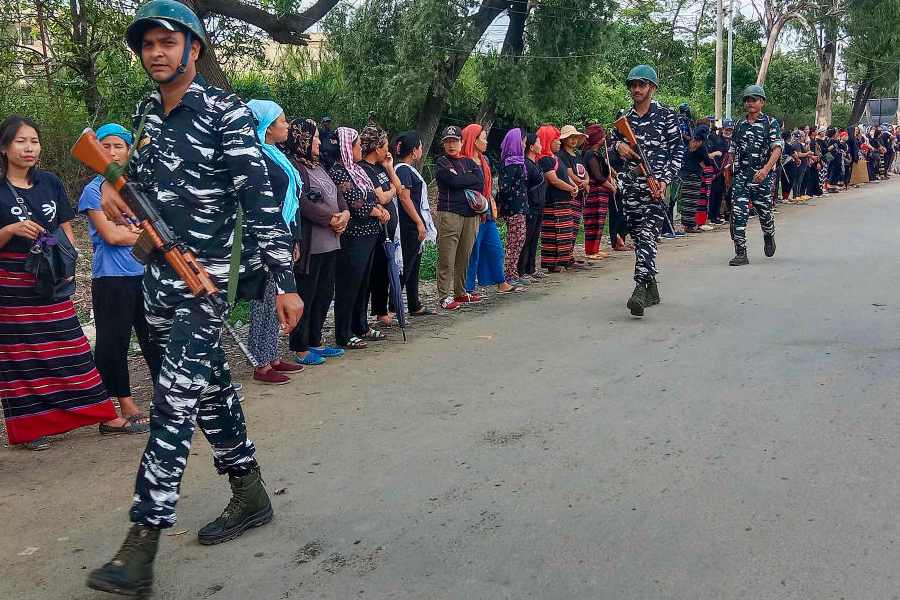Swapnarag’s second anniversary programme at Sujata Sadan (April 24) featured chart-toppers from Bengali feature films from the feel-good musicals of the 1950s and 60s to the latest Tarun Majumdar hit Alo. One can’t expect amateurs to match the brilliance of Manabendra Mukhopadhyay and Shyamal Mitra in Dole dodul dole jhulana (Deya Neya) or Geeta Dutt in Tumi je amaar (Harano Sur), but the Swapnarag singers put up a good show with Shampa Mukhopadhyay making ample use of her pliant timbre. The session on regional folk ditties was rather predictable. Coming last, guest artiste Sraboni Sen lived up to her reputation in a Tagore medley. Sen is maturing as a reliable interpreter of romantic melancholy as her rendition of Na chahile jare paowa jay, tellingly used in Arundhati Devi’s underrated classic Megh Roudra, showed.
Anshuman Bhowmick
Holy Child Girls’ High School Praktani Samiti’s annual programme at Mahajati Sadan on April 24 traced the path of golden nostalgia with veteran musician V. Balsara striking the inaugural notes of the evening’s programme on his legendary piano accordion. Balsara wove the same magic of background scores of the silver screen on his accordion, univox and melodica. His aged yet supple fingers evoked intense romanticism of a bygone era with numbers like Ei raat tomar aamar; while the evergreen Do re mi and We shall overcome ushered in notes of cheer and hope. Salil Choudhury’s only R.K. Films venture (film Jaagte Raho) had Balsara directing the orchestra for box-office hits like Jago Mohan. Folk tunes and marching rhythms still rest equally easy on the accordion bellow with Balsara.
Mohua Mitra
Ananda Chandrika, the dance institution run by Kathak exponent Amita Dutta, staged Joyodhwani at Rabindra Sadan on April 25. The theme dealt with the cultural heritage of Calcutta which has imbibed the different influences of other cultures and created one of its own. The presentation began with Bankim Chandra’s Vande mataram. This was followed by songs of Nazrul and Tagore. Improper treatment of the songs led the production nowhere. The costume colour was not contextual and Binoy Bhattacharya floundered with the light arrangements. Tarit Bhattacharya, as a singer failed to impress the audience. In The Blue Danube, composed in shringar rasa, the space was aptly used by the choreographer.
Sulagna Mukhopadhyay










